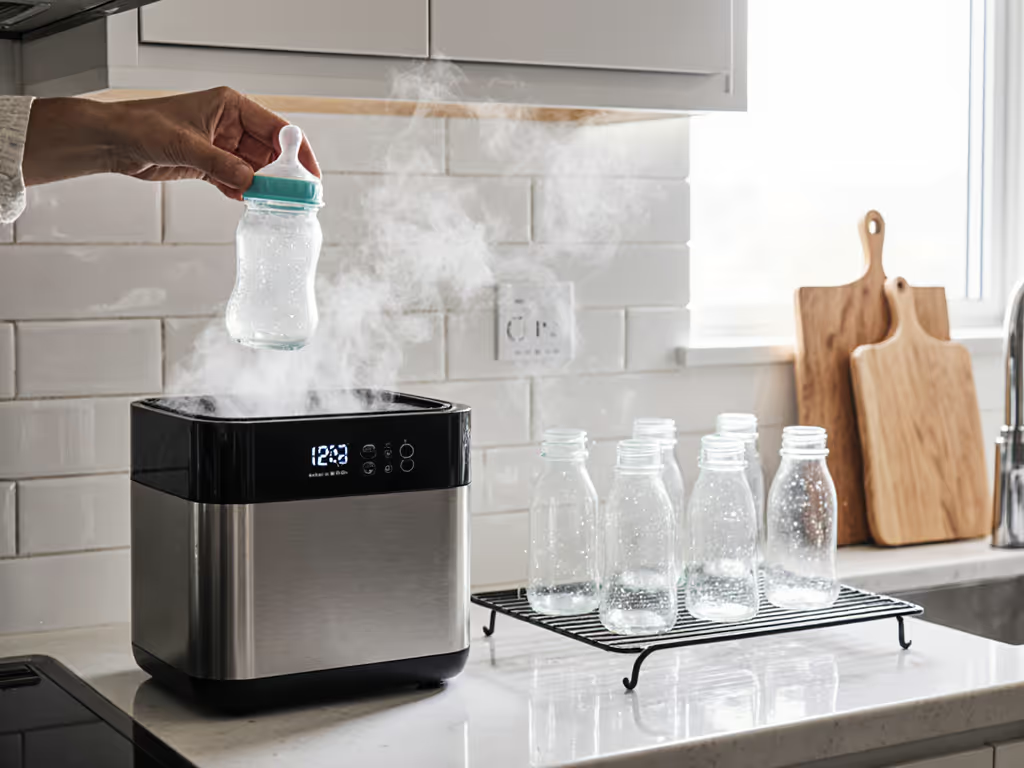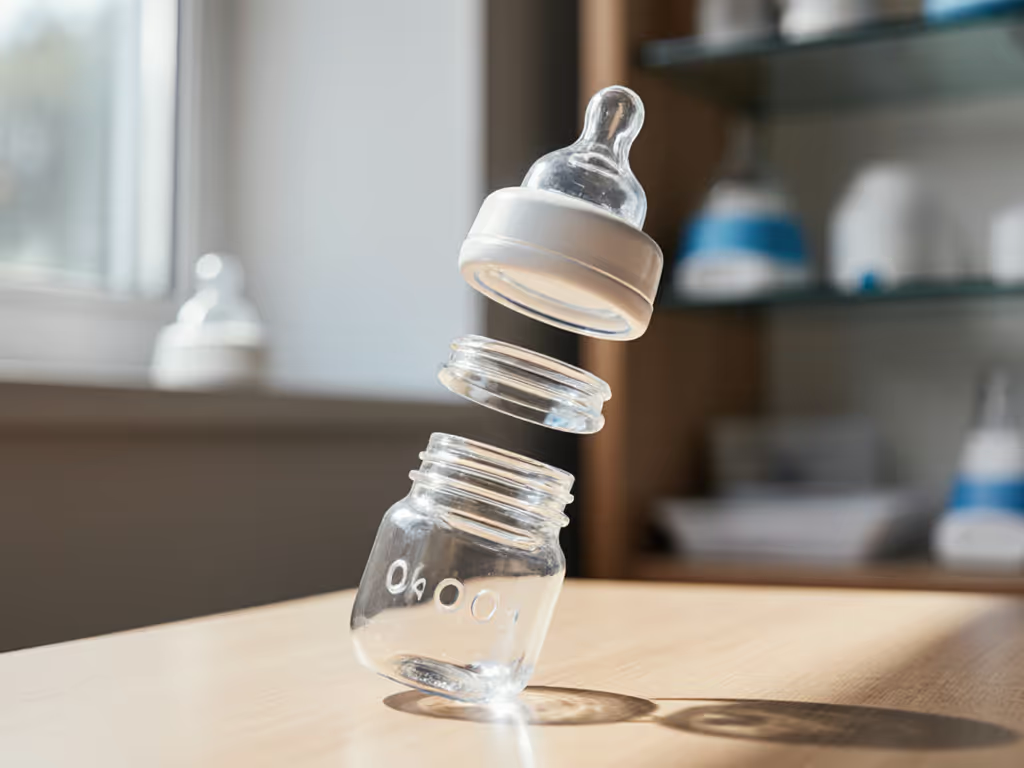
Stop Guessing Baby Bottle Flow: Nipple Guide for Parents
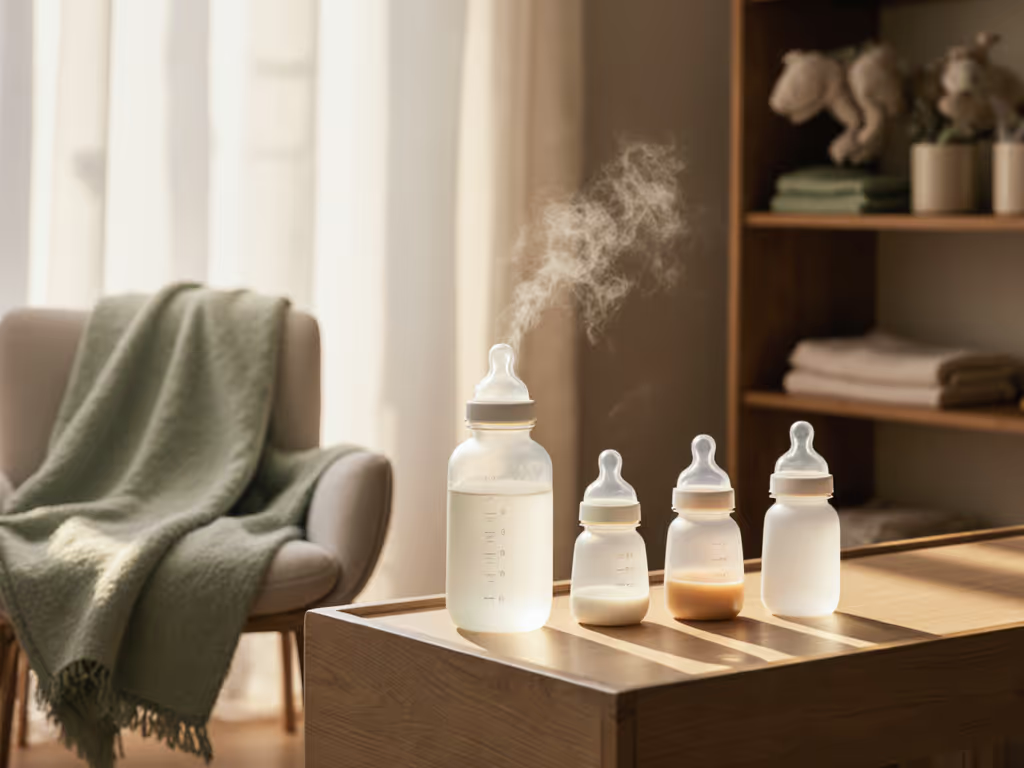
If you're staring at baby bottle nipple guide options at 3 a.m. while your little one cries, you're not alone. Nipple flow rates are the hidden puzzle piece in peaceful feeds, yet brands label them inconsistently ("slow," "level 1," or mysterious numbers). This baby bottle nipple guide cuts through the confusion with steps tested during real 2 a.m. feeds. One card, one choice. That's how we fix this.
I've been there: sticky notes on the floor mapping nipple sizes, milk temps, and burp timing. The breakthrough came when we matched flow rate to our baby's actual pace (not the box's age chart). Sudden calm. No magic. Just steps.
Why Flow Rate Matters (More Than You Think)
Your baby isn't 'fussy'; they are fighting physics. A nipple flow mismatch causes:
- Too slow: Baby works so hard they tire out (falls asleep mid-feed) or gets frustrated (arches back, slaps bottle)
- Too fast: Choking, gulping, or milk leaking from mouth (common in breastfed babies with fast-flow nipples)
Signs include coughing during feeds, taking over 30 minutes per bottle, or consistently finishing in under 10 minutes. These aren't 'phases'; they are flow rate alarms.
Babies fed both breast and bottle especially need slower flow to mimic breastfeeding effort. As Nationwide Children's Hospital confirms, rushing this step risks bottle refusal before daycare starts.
Your 5-Step Nipple Flow Fix (2 Minutes Per Check)
Forget age charts. Match flow to your baby's current sucking rhythm. Do these steps during one feeding session:
Step 1: Observe Your Baby's Natural Pace (Time: 30 seconds)
Do this now: Time how long your baby takes to drink 30 mL (1 oz). Note signs:
- 👍 Good pace: Steady sucks, slight pauses, finishes 3 to 4 oz in 15 to 20 minutes
- 👎 Too slow: Fatigue after 10 mL, falling asleep, jaw fatigue
- 👎 Too fast: Gulping, choking, milk pooling in cheeks
Difficulty: Easy. Requires no extra tools.
Step 2: Decode the Nipple Label (Time: 45 seconds)
Nipple markings lie. For deeper context and when to transition, see our lab-tested flow rate guide. A "newborn" nipple from Brand X might flow faster than Brand Y's "level 2." Check the actual flow identifier:
- Evenflo Balance +: Look for the letter on the nipple base (S = Slow, M = Medium, X = Fast)
- Philips Avent: Numbers 1 to 6 (1 = slowest)
- Dr. Brown's: Symbols (Y-cut = fastest)
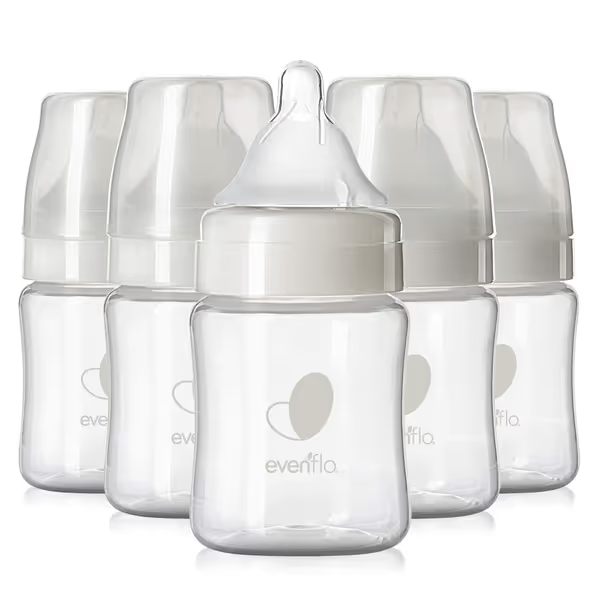
Evenflo Balance Plus Wide Neck Baby Bottles
Pro tip: If your nipple lacks markings, skip to Step 3. Flow rate matters more than branding.
Step 3: The 15-Minute Flow Test (Time: One feeding)
Your target: 15 to 20 minutes per 3 to 4 oz bottle. Less? Flow too fast. More? Too slow. Adjust using this grid:
| Sign You're Seeing | Likely Flow Issue | Immediate Fix |
|---|---|---|
| Baby falls asleep before finishing | Too slow | Try next-higher flow (e.g., S -> M) |
| Milk leaking from mouth | Too fast | Drop one flow level (e.g., M -> S) |
| Baby tugging/pulling off bottle | Vacuum lock (not flow) | Check vent assembly; not nipple size |
Difficulty: Moderate. Requires 1 backup nipple.
Step 4: Breastfed Babies? Start Slower (Time: 60 seconds)
Exclusive breastfeeders need slower flow than formula-fed peers. Their muscles are trained for breast effort. BIBS' feeding studies show breastfed babies often need 1 to 2 flow levels below age recommendations.
- ✅ Slow flow nipple tip: If baby chugs a bottle in 5 minutes, decrease flow. Yes, really.
- ❌ Skip this if: Baby is exclusively formula-fed (use Step 3's timing only).
One card, one choice. Swap only the nipple (not the bottle or feeding position) so you pinpoint the fix.
Step 5: Track Changes Simply (Time: 10 seconds per feed)
Grab a sticky note (like my 3 a.m. version). Log:
[Date] | Nipple: S | Time: 18 min | Signs: 👍
[Date] | Nipple: M | Time: 9 min | Signs: 👎 leaking
No apps. No spreadsheets. Two feeds of data reveal the pattern. Stop guessing when sleep is scarce.
When to Re-Test Flow Rates
Nipple needs change weekly (not monthly). Re-run Steps 1–3 when you see:
- Sudden feed refusal after weeks of success
- Growth spurts (baby finishing bottles 30% faster)
- Post-oral tie revision (latch strength improves)
Note: Nipple development stages vary wildly. A 3-month-old might still need 'newborn' flow if born premature.
The Real Win? Fewer Decisions
You don't need more bottles. You need one bottle system where nipples swap easily across flows. That's how we shrink choices:
- Pick one bottle brand with clear flow labeling (like Evenflo's letter system)
- Buy S + M nipples in that line (skip fancy vent parts (3 pieces max))
- Test only flow rate changes using Steps 1–5
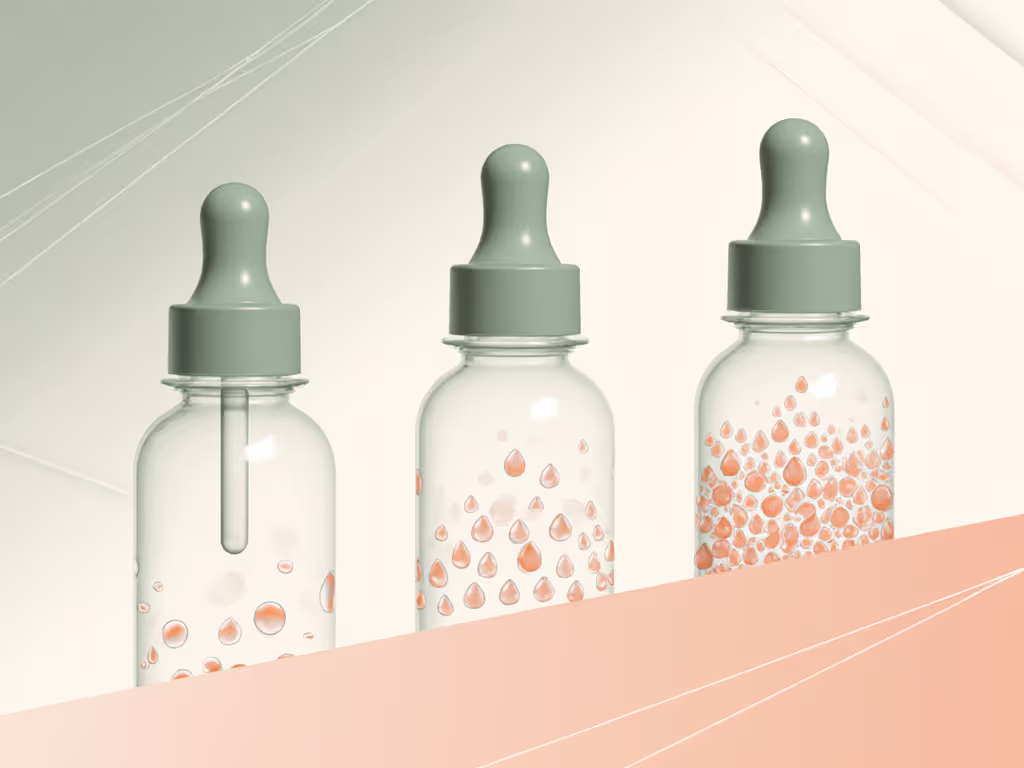
Shrink the choices, follow the steps, breathe through feeds. That's the midnight mantra.
Your Actionable Next Step
Tonight, during one bottle feed:
- Time the first 30 mL
- Check nipple markings (Step 2)
- Stick a note on your fridge: "S: 12 min 👎 gulping"
You'll know within 48 hours if flow rate was the culprit. No extra gear. No forum deep dives. Just milk moving at your baby's pace.
One variable. One fix. Sleep closer than you think.
Leila Okoye turns complex feeding choices into repeatable routines for first-time caregivers. Her steps are road-tested during actual 2 a.m. feeds, because clear steps beat guesswork when sleep is scarce.
Related Articles

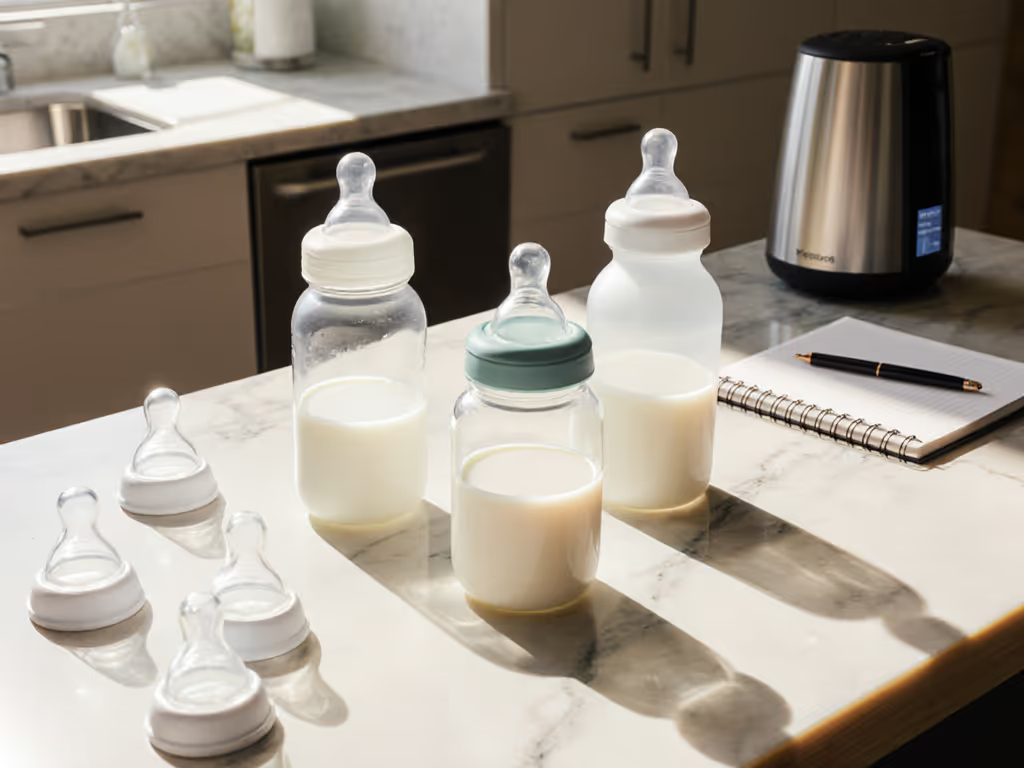
Baby Bottle Material Safety: Glass Plastic Silicone Compared
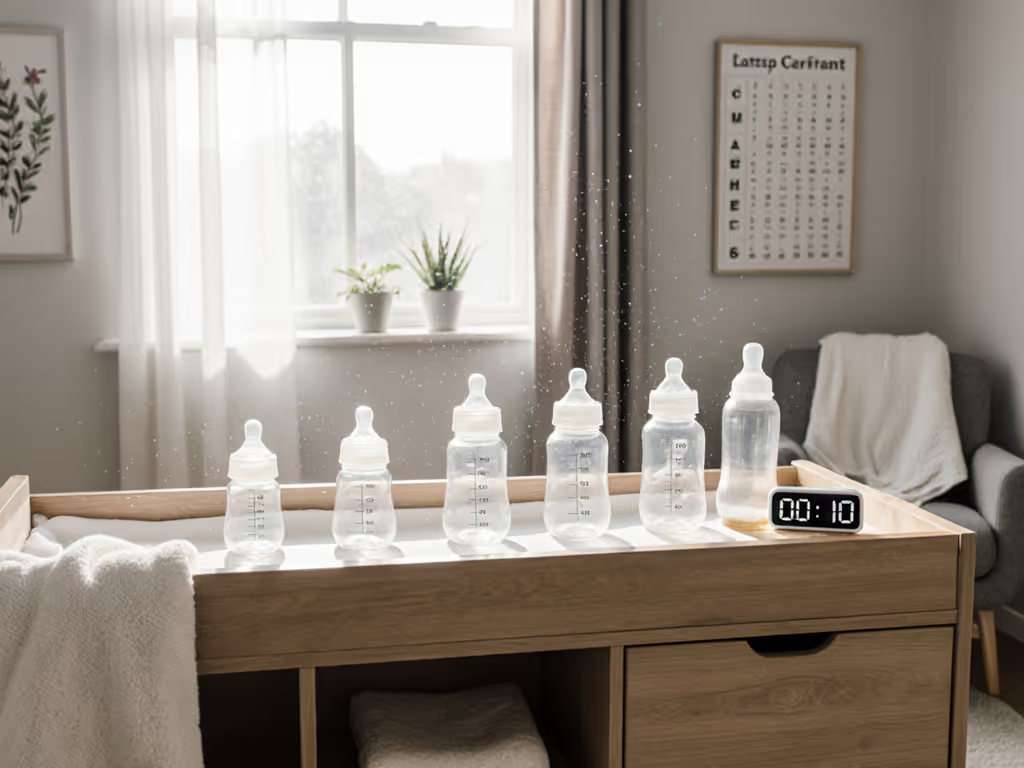
Baby Bottle Stages: Your Step-by-Step Transition Guide

Baby Bottle Flow Rates: Lab-Tested Truth vs Labels
